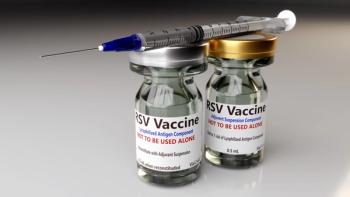
- Volume 0 0
TEST HELPS PREDICT RISK OF RECURRENT VTE
Measurement of D-dimer concentrationsmay help clinicians predict who isat high risk of recurrent venous thromboembolism(VTE) after stopping anticoagulanttherapy. Recurrent VTE occursin as many as 30% of patients whodiscontinue therapy. Those at highestrisk include patients who are male, areobese (>30 kg/m2), and had a proximal(vs distal) deep vein thrombosis. Arecent prospective study of 608 patientsevaluated the rate of recurrenceafter 3 months of oral anticoagulanttherapy. Therapy was stopped after 3months, then D-dimer levels weremeasured a month later. Patients withnormal levels (n = 385) did not resumetherapy. Patients with high levels (n =223) were randomized to resume therapyor remain off anticoagulants. Afteran average of 1.4 years of follow-up,recurrence rates were 6.2% in thegroup with normal levels, 1.9% in thegroup that resumed therapy, and 15%in the group with high levels whoremained off therapy. The authors concludedthat high D-dimer levels predicthigh risk of recurrent VTE, and this riskcan be minimized by restarting warfarintherapy.
Long-term therapy with anticoagulantslowers recurrent VTE risk but isassociated with a 1% to 3% risk ofmajor bleeding. Identifying patientswith a low risk of recurrence is importantin order to safely discontinuetherapy as soon as possible. Currentrecommendations for a first episode ofunprovoked VTE call for 6 to 12 monthsof therapy. The results of this study suggestthat use of the D-dimer test mayprovide an alternate approach to therapy,although further evaluation is necessaryto confirm safety and efficacy.
Dr. Garrett is a clinical pharmacistpractitioner at Cornerstone HealthCare in High Point, NC.
Articles in this issue
almost 19 years ago
compounding HOTLINEalmost 19 years ago
The Good and the Bad of High Cholesterolalmost 19 years ago
Compounding Dental Applicationsalmost 19 years ago
An Overview and Update of the Controlled Substances Act of 1970almost 19 years ago
ccpa SPEAKS OUT: AMP Definition "Defines" Pharmacists out of Medicaidalmost 19 years ago
Are We Really Ready? Preparing for Disastersalmost 19 years ago
When the Patient Won't Take the Medicinealmost 19 years ago
Community Commitment Earns RESPy Awardalmost 19 years ago
Kerr's Center Concentrates on Health and Educationalmost 19 years ago
Mandatory Periodic Breaks for Pharmacists UpheldNewsletter
Stay informed on drug updates, treatment guidelines, and pharmacy practice trends—subscribe to Pharmacy Times for weekly clinical insights.


















































































































































































































